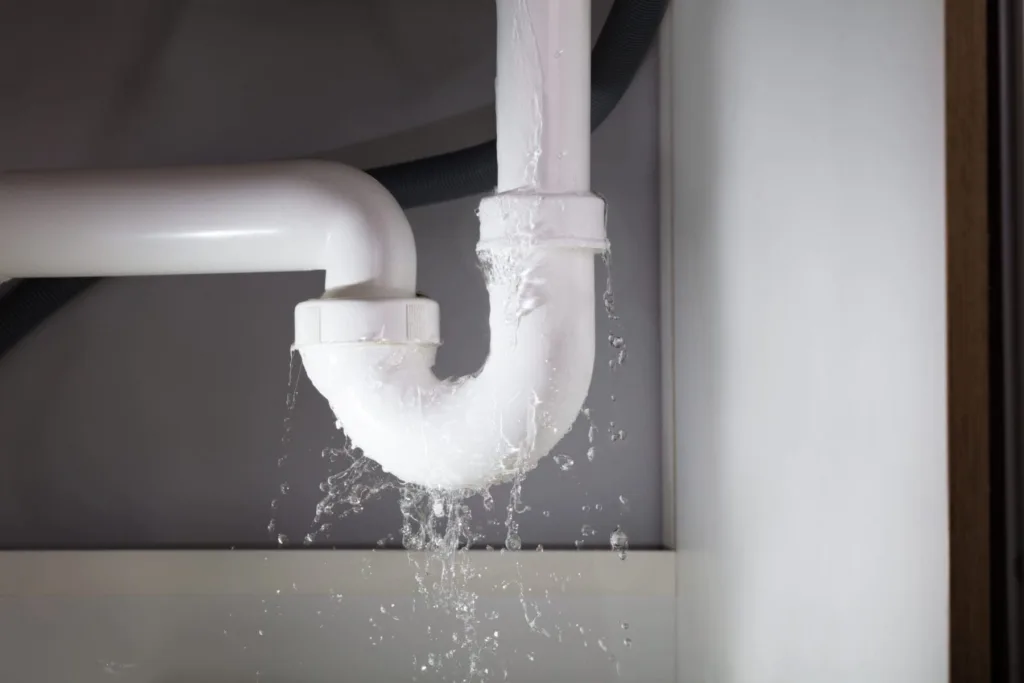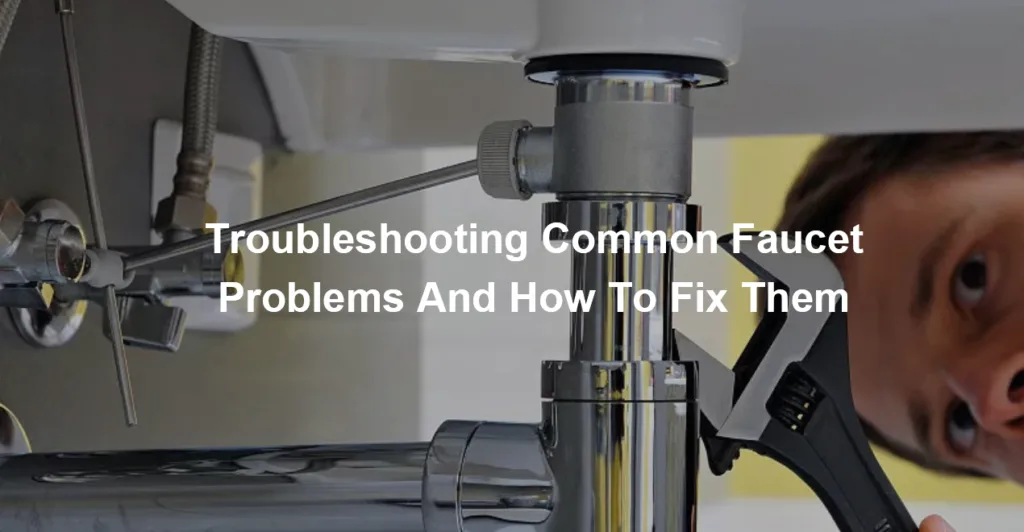Troubleshooting Common Faucet Problems And How To Fix Them
Faucets are an essential fixture in all homes. However, as with the rest of mechanical systems they may experience problems with time. Recognizing common problems with faucets and what to do about them will save your time, money and frustration of waiting for the services of a plumber. In this guide, we will share 10 basic faucet problems and how you can fix it.

Why Do Faucet Problems Happen?
In almost all cases, the issues with a faucet can come from various things like mineral deposits, broken parts, and even bad installation. Other factors such as sediment buildup within the pipes or usage over time can damage even the best brands of faucets. Fortunately, if you have some plumbing knowledge and basic tools, it will be easy to solve the most common faucet issues.
1: Leaky Faucet That Won’t Stop Dripping
Faucet leaks: A faucet leak is the most common faucet issue. It will cost you money in utilities over time but you will waste a lot of water! Most faucet leaks are caused by worn washers, or O-rings, or corroded valve seats.
How to Fix It?
To repair the leak, first, flip off the water delivered below the sink. Then cast off the faucet, take care of and take a look at the washer and O-ring, and replace any which can be worn or flat. If water leaks after replacing the washers, the valve seat is probably bad, and it may be time to buy a new faucet.
2: Low Water Pressure In The Faucet
If your faucet drips rather than flows, you are probably having a different frustrating faucet issue – low water pressure. This is most often the result of a blocked aerator, or possible debris that found its way into your pipes. To check, simply unscrew the aerator at the faucet end and soak it in vinegar for one minute to dissolve all the mineral deposits. If water pressure is still lost then you may have a plumbing issue or your faucet body itself is corroded.
How to Fix It?
Sometimes low water pressure is from undetected leaks, or may be a municipal water problem. If your faucet is not the only fixture showing these symptoms, you will need to call a plumber.
3: Faucet Handle Loose Or Wobbly
Any loose faucet handle can be aggravating and can also create a risk should it leak/water spurt. A loose faucet handle mainly happens because the screw that holds the handle finally loosened.
How to fix it?
To fix, take off the decorative cap from the handle, and using a hex wrench or screwdriver, tighten down the screw that is below it. If the handle still wobbles, you will need to probably replace the cartridge or mounting nut. This is one of the easiest faucet problems but is often overlooked.
4: Noisy Faucet That Sputters Or Whistles
A noisy faucet can sound like a haunted house when it whistles, bangs, or rattles. These annoyances come from high water stress, unfastened parts, or worn washers, however.
How to Fix It?
Start by checking the water pressure regulator. If your house has high water pressure, say 60 psi or more, you will get random noises from the faucet. Check for loose washers or a damaged faucet cartridge. Most of the time replacing those will stop the noise and your sink will be quiet again!
5: Faucet Not Turning Off Properly
A faucet that runs constantly after you turn the manage approach you have a broken faucet cartridge or you stripped the take care of. This is important because it may mean you are wasting water and there could be bigger plumbing problems.
How to Fix It?
To fix this faucet problem, you would turn the water supply off, and remove the faucet handle. You will want to see if the cartridge is cracked or misaligned. Replace it with a new cartridge, and it should work properly once more. If not, that’s the decision to mount a new faucet.
6: Corroded Faucet That Looks Dirty Or Stiff
A faucet that is corroded may have not only appearance but performance problems as well. If your faucet is hard to turn, leaking around the bottom, or has green or white buildup, then you more than likely have corrosion. Corrosion can happen when you have hard water or old plumbing.
How to Fix It?
You can clean off the smaller corrosion products with vinegar and baking soda. For worse corrosion, or corrosion inside the faucet, replacement is the best option. Look for bathroom vanity cabinets without the countertop so you can install or mount a floating faucet easier.
7: Issues After Floating Vanity Installation
Sometimes a faucet issue occurs right after the floating vanity is installed because the faucet could be short, not anchored fully, or not aligned properly.
How to Fix It?
Always measure the faucet and height of your sink before installing. Ensure your brackets are secure for floating vanity and that all plumbing lines are aligned properly before mounting. If you have a floating vanity sink, validate the faucet distance to match up with the center of the basin.
8: Leaks Below The Sink
A puddle under the sink indicates something is incorrect. The leak could be due to loose connections, damaged drain pipe, or cracks in the faucet body.
How to Fix It?
You will want to investigate all water supply connections and tighten the connection if it is loose; check the P-trap and pipes for damage from cracks or corrosion. If everything looks OK, the problem may be originating from inside the faucet—especially in the case of a floating vanity with drawers, which allows water to pool inside and possibly damage any items stored there.

9: Tips For Preventing Future Faucet Problems
Generally, preventing faucet problems, or halting them, is less complicated than repairing them. Regular maintenance will enable your faucet to last in excess of years. Clean the aerator each month to remove the buildup. Check for drips or leaks every few weeks. If you have a new floating vanity bathroom, check on the underside regularly to address hidden or unseen leaks.

How to Fix It?
Also, use quality materials. You do not want to use cheap materials during your repairs, and always be sure you are using correct brackets for floating vanity and fittings in attaching a floating vanity.
10: When To Call A Professional

Many faucet problems are DIY-able, but some require a professional. Multiple problems, water discoloration, or if you can’t figure out where the issue is coming from, hiring a licensed plumber is a good decision.
How to Fix It?
This is especially true when you’re dealing with bathroom vanities without legs, or 30 inch floating vanity with sink arrangements, which only have limited access and plumbing as well as access repairs. They are also able to see hidden leaks or install fixtures that are updated, preventing issues in the future.
Conclusion
In the end, tackling issues with your faucet doesn’t need to be a daunting task. If you are aware of the most common problems and following the step-by-step solution that are provided within this article, you will be able to solve most faucet issues yourself and reduce your plumbing bill. However, if you’re uncertain or aren’t comfortable with DIY fixes do not hesitate to call an experienced plumber.
Be aware that regular maintenance and timely repairs can prolong the life of your faucets, and help ensure that your water costs are at bay. Keep an eye on and alert to the needs of your plumbing system so that it can provide you with a great service for many the years to come.
If you’ve found this blog post useful please forward it to family and friends who could also benefit from these ideas. Happy fixing!

